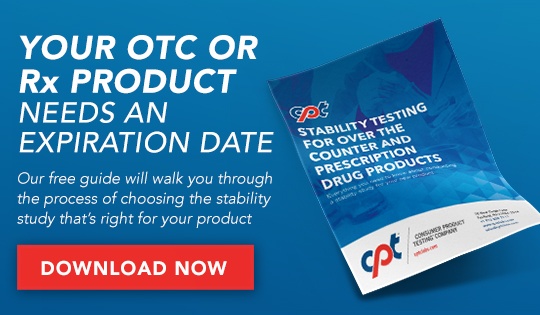USP testing has long addressed concerns surrounding heavy metals — so why have they eliminated the Heavy Metals testing as outlined in General Chapter <231>?
When it comes to pharmaceutical development and manufacturing, USP testing standards ensure quality, purity and consistency. This non-government organization champions public health by safeguarding therapeutic products and devices of all types.
If you’re wondering why new regulations are in effect and what this means for the future of USP heavy metals testing, the following list of FAQs will address your questions and concerns.


1. Why did USP eliminate the Heavy Metals testing described in General Chapter <231>?
The Heavy Metals test described in USP General Chapter <231> was a classical, wet chemistry testing method that was developed more than 100 years ago. There are several reasons why the USP has chosen to eliminate the Heavy Metals test, but the primary reasons are as follows: It lacked “specificity,” i.e., the ability to distinguish between and quantitate specific heavy metals of concern.- It lacked the “sensitivity” to quantitate the low levels of heavy metals that are expected by today’s industry standards.
- It employed the use of reagents which are highly toxic. USP had previously announced its intent to move in the direction of “green” chemistry wherever possible.
- It lacked “specificity,” i.e., the ability to distinguish between and quantitate specific heavy metals of concern.
2. What was the focus of the USP <231> Heavy Metals test?
Historically, the testing for heavy metals was conducted exclusively on raw materials that were used in food, drug, cosmetic/personal care and dietary supplement products. Unfortunately, heavy metal contamination from sources other than raw materials were rarely, if ever, assessed. This resulted in continued heavy metal contamination of such products, placing users at-risk.
3. What is the “new” focus that USP and FDA have on heavy metals testing?
Since heavy metals contamination can occur from any number of sources, including but not limited to raw materials, USP testing will now focus on finished products. They will be tested in their marketed containers with labeling in place. Also, the terminology has been changed from “heavy metals” to “elemental impurities”. This “new” focus ensures that metal contaminants, from all sources, are captured, including:- Raw materials.
- Product manufacturing, filling and packaging processes.
- Primary container/closure systems and labeling.
4. Will USP <231> Heavy Metals be replaced by another test?
The answer to this question is both “Yes” and “No”.- “No”, in the sense that the USP <231> test for Heavy Metals has now been eliminated (without replacement) from every USP Monograph in which it once appeared. There is no longer a general requirement to test raw materials for heavy metals.
- “Yes”, in the sense that USP General Chapter <232> entitled ‘Elemental Impurities – Limits’ now establishes a limit for each elemental impurity of concern. USP <233> entitled ‘Elemental Impurities – Procedures,’ provides a choice of methodologies to conduct USP testing. The old Heavy Metals method described in USP <231> has now been eliminated and replaced with more modern methods using Inductively Coupled Plasma (ICP) and related technologies.
- “Yes” in the sense that the focus of testing for elemental impurities has shifted from raw materials, to the packaged finished product, and that such testing is now required in accordance with USP General Chapters <232> entitled Elemental Impurities – Limits, and <233> entitled Elemental Impurities – Procedures.
5. So, what is the impact of this change for owners of affected products?
You are no longer required to test your raw materials for Heavy Metals per USP <231>. That being said, you are now required to assess your products for the twenty-four (24) elemental impurities listed in USP <232> Elemental Impurities – Limits. This assessment may be achieved through a science-based risk assessment or by performing actual testing. Testing may include raw materials, container/closure systems, in-process samples of product batches, and finished product batches which have resided in their marketed packaging and labeling through self-life.6. How can CPTC assist you with your elemental impurities testing?
CPT is equipped with state-of-the-art Inductively Coupled Plasma – Mass Spectrometry (ICP-MS) and microwave digestion sample preparation systems to analyze any and all components of your product, and also the assembled and filled product itself. Our in-house experts are ready to speak with you, offering their advice in terms of your elemental impurities testing needs. Although the USP has eliminated the traditional heavy metal testing methods, their new standards will ensure greater quality and safety. Based on more accurate methods and advanced technology, implementation of USP chapters <232> and <233> will set safer limits with regard to public health.

